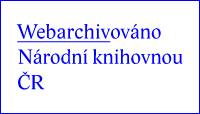Nalmefen pomáhá snížit pití (bez zvracení) a šetří peníze za alkohol
Do tří klinických studií byli zařazení pacienti s vysokou a velmi vysokou úrovní pití alkoholu (ve studiích ESENCE 1 a ESENCE 2 to bylo 78 % a ve studii SENCE to bylo 52 % pacientů s vysokou a velmi vysokou spotřebou alkoholu). Jako vysoká a velmi vysoká úroveň pití byla brána spotřeba alkoholu více než 60g/ den (muži) nebo více než 40g/ den (ženy) (podle WHO).
Během klinických studií si pacienti s psychiatrem povídali o svých potřebách a hodnotili, co jim alkohol přináší (v klinických studiích tzv. BRENDA, kdy se rozpráví nad tím, co pacient chce, jaké jsou jeho potřeby, co mu alkohol dává, co mu bere, atd. V Česku se vedou podobné rozhovory, jen se jim neříká BRENDA) a užívali nalmefen podle potřeby (tj. když měli chuť se napít alkoholu).
Po 6 měsících, a výsledek přetrvával i ve 13 měsíci, došlo jak ke snížení počtu dnů, ve kterých pacienti pili hodně a velmi hodně, tak ke snížení celkového množství vypitého alkoholu.
Po 6 měsících došlo, ve studii ESENCE 1, ke snížení o 18,3 g alkoholu za den, a, ve studii ESENCE 2, ke snížení o 10,3 gramů alkoholu za den.
Ve studii SENCE došlo ke snížení pití o 15,3 gramů alkoholu za den (6 měsíc) a 17,3 gramů alkoholu za den (13 měsíc).
K nejčastějším nežádoucím účinkům nalmefenu, které byly nejvyšší v prvním měsíci a v následujícíh měsích výrazně klesly na průměrných 1 - 2 %, byla nauzea (pocit na zvracení u 22 %) a závratě (18 %).
Převzato: www.nice.org.uk
Původní text:
The company identified 3 randomised controlled trials (ESENSE1, ESENSE2 and SENSE) in adults with alcohol dependence, comparing 18 mg nalmefene (on an as‑needed basis) plus psychosocial support with placebo plus psychosocial support. ESENSE1 (n=604) and ESENSE2 (n=718) were identical efficacy studies with a follow‑up period of 24 weeks. SENSE (n=675) was primarily designed to collect safety data for up to 12 months on nalmefene, but after the study had started the protocol was amended to include efficacy analyses. SENSE had a follow‑up period of 12 months.
Psychosocial support (in the form of BRENDA), focusing on treatment adherence and reduction of alcohol consumption, was provided to all treatment groups in the 3 studies. The first part comprised a biopsychosocial evaluation, followed by sharing the results with the patient. The next stage involved expressing empathy for the patient and together identifying their needs, providing direct advice to the patient to meet those needs, assessing patient reaction to advice and adjusting the treatment plan as needed. All sessions were provided by trained professionals and were delivered at weekly intervals for the first 2 weeks and then monthly. Sessions lasted for 15–30 minutes except for the first longer session, which was 30–40 minutes.
In ESENSE1 and ESENSE2, approximately 78% of all patients enrolled had a high or very high drinking risk level at baseline. In SENSE, 52% of the enrolled patients had a high or very high drinking risk level at baseline. In ESENSE1, ESENSE2 and SENSE, 74%, 57% and 52% respectively continued drinking at this level at randomisation.
Results of the post hoc analyses in the licensed population (that is, people who had a high or very high drinking risk level at baseline and maintained such a level at randomisation) showed that there were greater reductions in the number of heavy drinking days and total alcohol consumption in patients treated with nalmefene plus BRENDA, than with placebo plus BRENDA. The treatment difference in the changes from baseline to 6 months in the number of heavy drinking days, using mixed model repeated measures analysis, was −3.7 days per month (95% confidence interval [CI] −5.9 to −1.5, p=0.001) in ESENSE1, and −2.7 days per month (95% CI −5.0 to −0.3, p=0.025) in ESENSE2. The treatment difference in the changes from baseline to 6 months in total alcohol consumption was −18.3 g per day (95% CI −26.9 to −9.7, p<0.001) in ESENSE1, and −10.3 g per day (95% CI −20.2 to −0.5, p=0.040) in ESENSE2. In the SENSE study, the treatment difference in the changes from baseline to 6 months in the number of heavy drinking days was −2.6 days per month (95% CI −5.5 to 0.2, p=0.071) at 6 months, and −3.6 days per month (95% CI −6.5 to −0.7, p=0.016) at month 13. The difference in total alcohol consumption at month 6 was −15.3 g per day (95% CI −29.1 to −1.5, p=0.031) and at month 13 was −17.3 g per day (95% CI −30.9 to −3.8, p=0.013
The incidence of nausea (22%) and dizziness (18%) were high in the first month of treatment but decreased to approximately 1–2% in subsequent months.
A heavy drinking day was defined, in line with the World Health Organization classification of drinking risk levels, as alcohol consumption of more than 60 g per day (equivalent to more than 7.5 units) for men and more than 40 g per day (equivalent to more than 5 units) for women.



